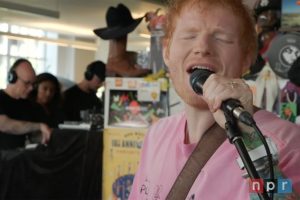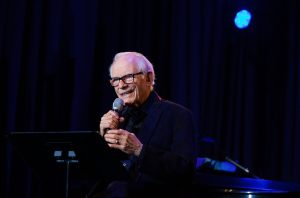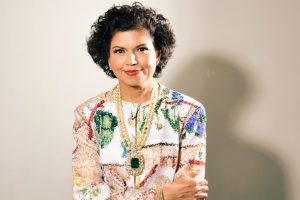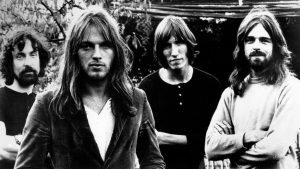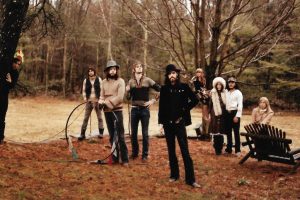Ed Sheeran Plays Live NPR Tiny Desk Show After Dropping ‘Play’ LP
Ed Sheeran made a bit of history on Friday morning (Sept. 12) when he played the first-ever livestreamed NPR Tiny Desk concert of this scale to celebrate the release of his eighth album, Play. Taking to the office with his trusty loop pedal set-up, a keyboard and acoustic guitar, Sheeran got right down to business and proved he was in the moment by asking, “is it live now?” Wearing a pink shirt cued to the color of the album cover, Sheeran first explained to the crowd how the loop rig works before bringing up a sample on his keyboard and playing the new album track “Sapphire.” Layering in a guitar bit, banging on his acoustic to drop in a beat and recording his own backing vocals, Sheeran quickly built what sounded like full backing band accompaniment as he crooned the song’s keening chorus, “The lights, your face, your eyes/ Exploding like fireworks in the sky/ Sapphire!” and busted into the rap-like verses. Sheeran recalled that he’d visited the Desk before, though it was during COVID, so he filmed it remotely in a house in upstate New York, or maybe Jersey. “It’s kinda mad being here and seeing the actual desk, it’s great,” he said, thanking the NPR staff for showing up to the place they already work to see him. Warning the rapt audience that he’d only played the second selection once before on loop pedal and asking for forgiveness in advance in case he messed up, Sheeran proceeded to do just that and start over. Plucking a bluesy figure on his acoustic, Sheeran then smoothly leaned into the lyrics to the Play bad break-up single, “A Little More.” “You think I was born to ruin your life/ But you did most of that before I arrived,” he sang over a spare, strummy background before sliding into the stinging falsetto chorus, “I used to love you/Now every day I hate you just a little more/ Life got better when I lost you/ But every day I hate you just a little more and more and more.” “The Desk has always been about breaking down the walls between artist and audience,” said Bobby Carter, the series producer and host said in a statement released before the episode. “With this livestream, we’re taking that intimacy worldwide. And trust me — Ed Sheeran is going to make history.” Though by now he’s used to playing for tens of thousands of screaming fans in stadiums around the world, Sheeran admitted to being “a little nervous” to perform for the modest crowd of public radio staffers. “I don’t usually get nervous, but this is fun,” he said. He then set aside the loop pedal for a run through the new album track “Camera,” a moving acoustic ballad about the beauty we can’t always see in ourselves. “You should see the way the stars illuminate your stunning silhouette/ You’re glowing in the dark/ I had to count to ten and take a breath/ You think that you don’t have/ Beauty and abundance but you do/ And that’s the truth,” he crooned. The chorus was a heart-swelling expression of true love, with Sheeran singing, “I don’t need a camera to capture this moment/ I’ll remember how you look tonight for all my life/ When everything is black and white, your color’s exploding/ There’s somethin’ in the way you shine/ I don’t need a camеra when you’re in my eyеs.” Before his final song, Sheeran took time to thank NPR for letting his use his loop pedal, saying he could count “on one hand” the amount of times other American media outlets allowed him to schlep in his trusty rig in place of a full live band. The set ended with the first Play single, the skittery “Azizam,” which he recreated via a thumping bass keyboard backing track and layers of acoustic guitars and backing vocals. Sheeran is gearing up to take his Play show on the road with upcoming December stadium Loop Tour shows in Europe in December, followed by a run of gigs in Australia and New Zealand in January, February and March. At press time no U.S. dates have been announced for the Loop Tour. Watch Sheeran’s Tiny Desk show below. Source link


